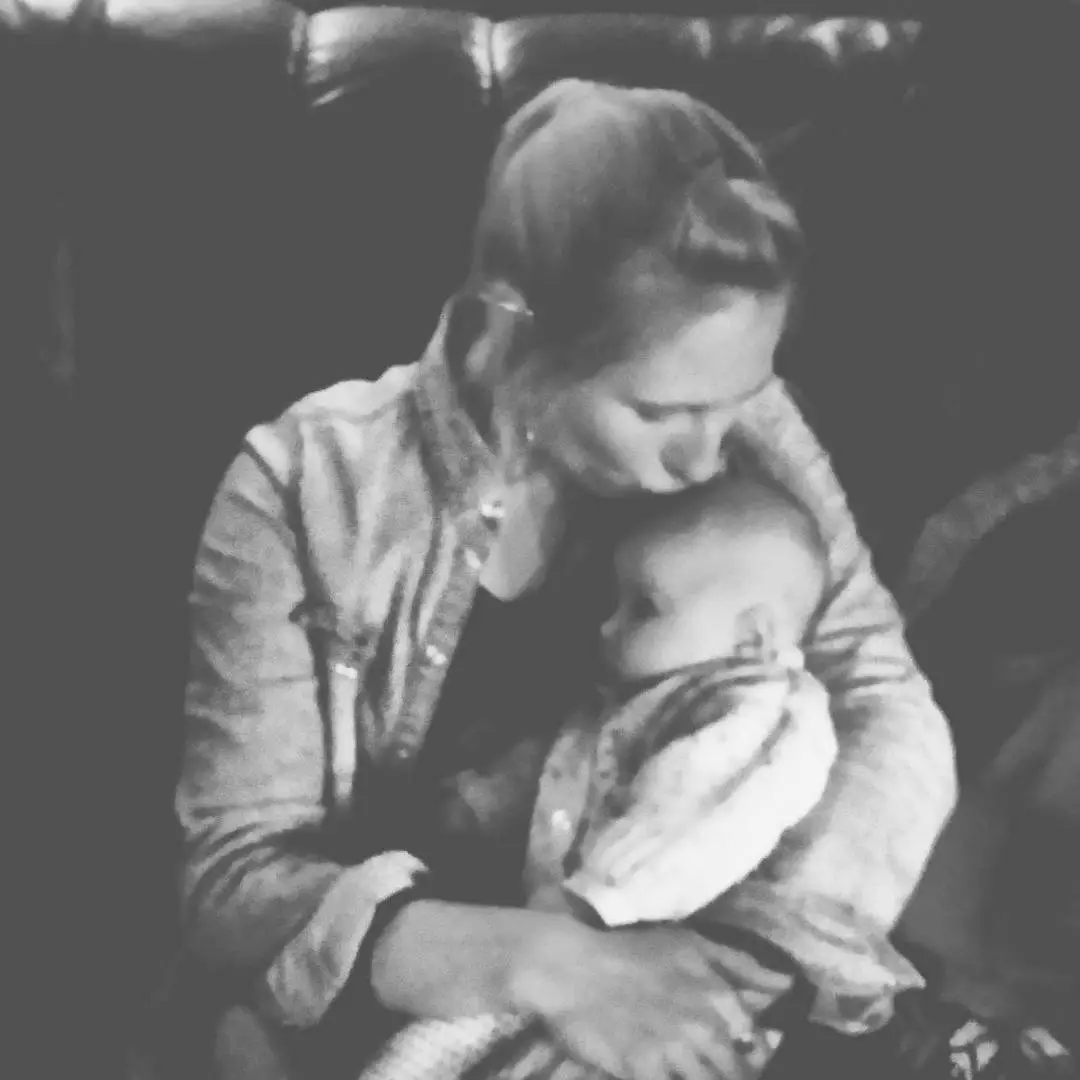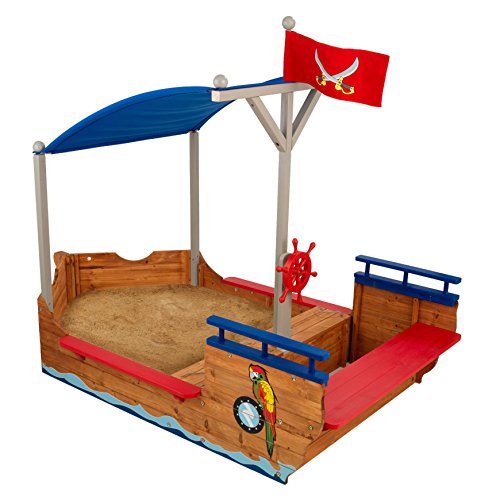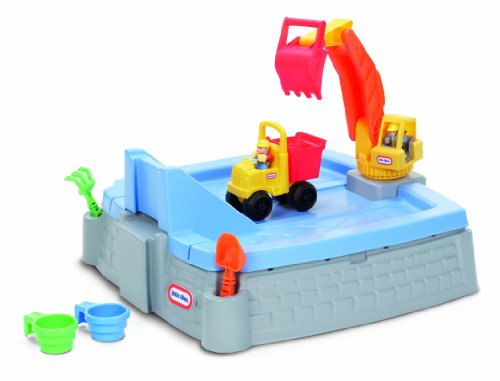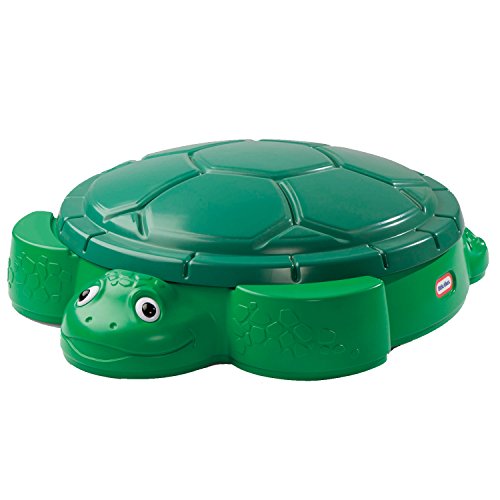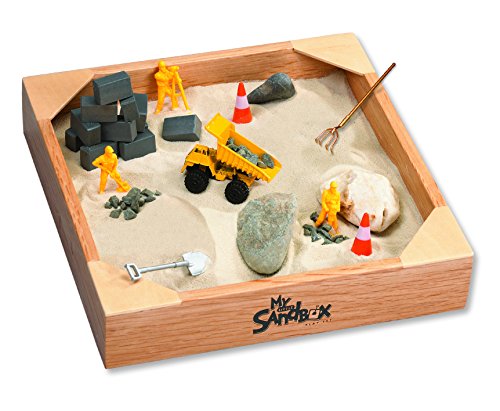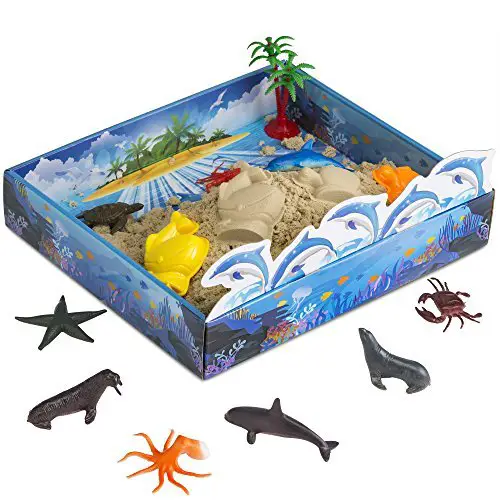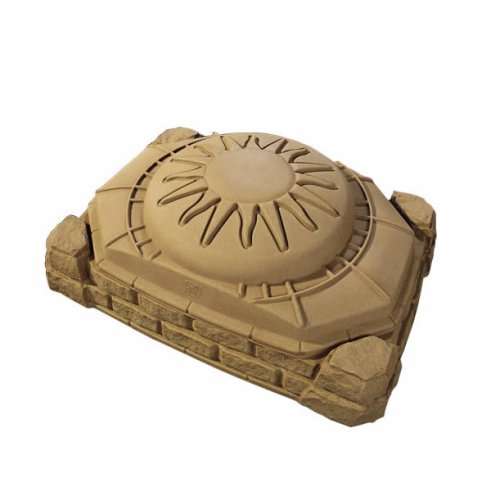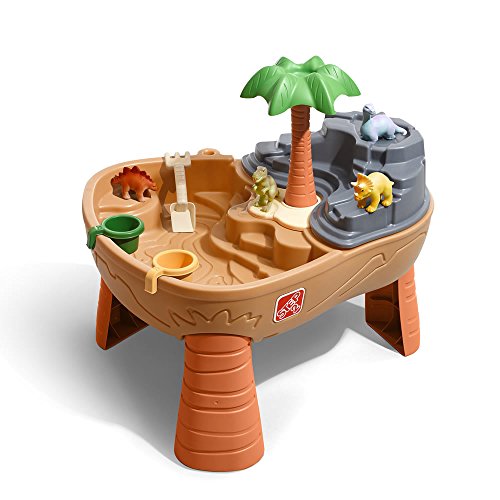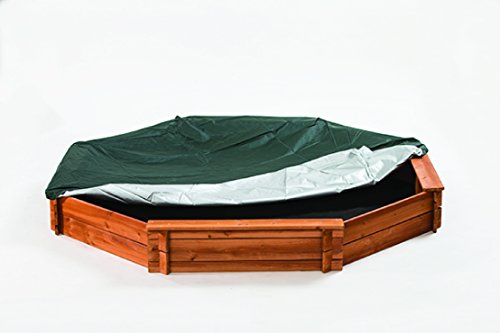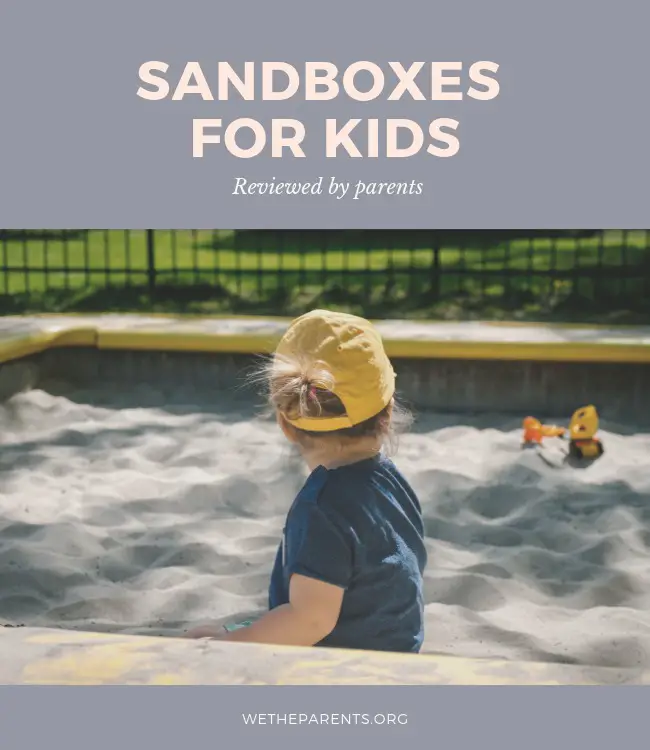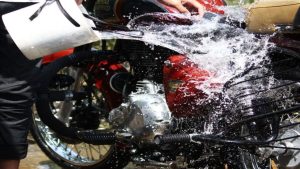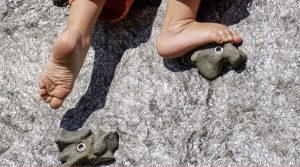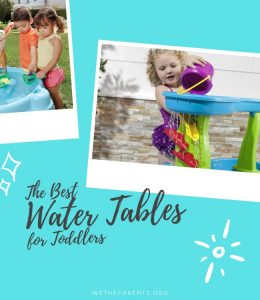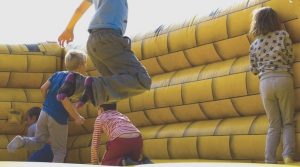Remember how much fun sandboxes were when you were a kid? Well, they still are! Over the years, toy makers have found some pretty creative ways to make them even more fun. And, of course, we’re going to dig deep to find out which are the best.
We just can’t help ourselves, so, without further ado, here’s a list of our seven favorites, plus what we think is the best overall sandpit!
Our top picks of the best sandboxes for kids
Editor’s choice
Our opinion
This looks like too much fun! The KidKraft Pirate Sandboat (check price on Amazon), made out of solid wood, is shaped like a pirate ship, complete with a canopy, flag, and steering wheel.
Several benches, as well as the sand area, will accommodate several children at once as they sail their private sandy craft to imaginary far-away places. The exterior even has waves and pirate stuff painted on
What we love
- The wooden bench seats are removable, allowing for storage inside
- The canopy is great for sunny days
- It has a lot of different areas for kids to explore
Watch for
- Treating the wood with a good sealer will make it last longer
- The floor of the sandbox area can be reinforced with a wood base
- It does take a few hours for assembly, but it’s time well spent!
Best budget buy
Our opinion
If it’s made by Little Tikes, you know it’s going to be great! Little Tikes Big Digger Sandbox (check price on Amazon) hits the ball out of the park. Bright colors, durable heavy-duty plastic, and plenty of accessories will keep your preschool-aged children busy for hours.
They get to operate an excavating crane to dump sand into a maneuverable toy dump truck. When the sandbox is open, the lid can be connected to the side, adding an extended play area. Kids also get to play with two small scoops, a rake, and a shovel. They even get two little construction workers to guide all of the action.
What we love
- It’s an ideal, affordable option for a starter sandbox
- The parts are safe enough for babies as young as 36 months
Watch for
- Kids can’t actually get into the sandbox
- Not recommended for kids over five
Best plastic sandbox with cover
Our opinion
Little Tikes does it again! (check price on Amazon) This one’s a little bigger, so kids can actually sit in the sand if they want to. It’s made of durable, heavy-duty plastic and shaped like a happy turtle, with a big smile on its bright-eyed face.
The lid is shaped like its shell and can be removed and used as a different play toy for whatever their imagination comes up with. The feet double as seats where your little ones can sit and play in the sand with their feet. The bottom of the sandbox is even molded to give them targets to dig for.
What we love
- What’s not to like about Little Tykes!
- The cover is great for keeping roaming kitties away
- Ideal for a summer outdoor toy, it helps teach children social skills with their friends
Watch for
- Accessories like shovels and buckets aren’t included
- Strong winds can blow the lid off
Best mini sandbox
Our opinion
It’s small enough, at ten square inches, to be used either on a table-top, on the floor, or outside. My Little Sandbox (check price on Amazon) is made of solid wood, has a larger playmat to help with the mess, and sand is included.
Children can stretch the limits of their imaginations pretending to work in a construction zone with a dump truck, boulders, safety cones, gravel, builder blocks, plus a rake and a shovel for manual labor. They can even take charge of the operation with their own construction crew!
What we love
- A Dr. Toy 'Best Toy' Winner!
- Perfect when only a little play space available
- Great for rainy-day fun inside!
Watch for
- Recommended for kids aged from four to seven
Best sandbox toys
Our opinion
Now, CoolSand 3D Sandbox (check price on Amazon) is different. Wet-looking, moldable, colored sand that won’t stick to their clothes or hands. But it’s not wet! It slides through their fingers just like real sand, while the packaging turns into a small sandbox, brilliantly decorated with nautical themes.
Kids get to choose from ten different safari-themed molds to create their own masterpieces. They can then add in all the other sea creatures for some great, imaginative fun.
What we love
- Easy to keep clean!
- The sand makes stronger molds than regular sand, and doesn’t dry out
- You'll have some fun, quality time playing with this alongside them
Watch for
- The sand is so addictive to play with - you might be tempted to snag a little for yourself!
- Not recommended for children under three
Best indoor sandbox
Our opinion
We can always count on the quality of Step2. This durable, high-quality sandbox (check price on Amazon) works outside or inside. Made of durable plastic, with a snap-on lid etched like a smiling sun, it will hold 200 lbs. of sand.
Shaped like stacked, sandstone-colored boulders, the sandbox has plenty of seats on the corners and edges for your children and their friends.
What we love
- Comes fully assembled!
- The lid makes an ideal place to store all their other playsand accessories, as well as keeping it safe from pets and the weather
- You can use it as an outdoor planter after the kids outgrow it
Watch for
- Recommended for children aged one to six
- High winds can blow the lid off
- Small holes on the lid for ventilation allow rainwater to get inside
Best combo
Our opinion
We can always count on the quality of Step2. The Step2 Dino Dig Sand & Water Table (check price on Walmart) is a high-quality sandbox made for both indoor and outdoor use, and because it’s double-sided, kids can use sand and water at the same time.
So, if it’s raining, or dipping below freezing outside, kids can play in both sand and water as if it’s July.
The Dino Dig table doesn’t hold only sand or water, you can make it a truly sensory experience by filling it with dried beans, rice, or pasta instead. Are your kids messy? Use a dry product on either side, especially great when two kids are playing together.
What we love
- Includes a table lid to keep out blowing leaves and curious critters
- A non-leak plug makes water a cinch to drain
- There's a hole to accommodate your child’s outdoor umbrella
Watch for
- Recommended for ages two through five - younger toddlers will need supervision
Best wooden sandbox with lid
Our opinion
At 78″ wide, this solidly constructed wooden sandbox has plenty of room for several kids to play. Creative Cedar Designs Octagon Wooden Sandbox (check price on eBay) also includes a ground liner and a polystyrene tarp cover to protect the sand.
The sandbox itself is made of tough, attractive cedar wood that will last through any weather. Once you have it set up, you’ll probably agree with us that this is our Best Wooden Sandbox and that it’ll provide your kids with years of sandy fun.
What we love
- Easy to assemble, to the point where kids might be able to do it themselves
- Solid, attractive construction
Watch for
- Ground liner doesn’t attach to sandbox, so leaking sand is a possibility. We recommend you fix it in place with a staple gun, or nails and wood glue.
- Tarp cover is hard to manipulate and keep on in heavy winds
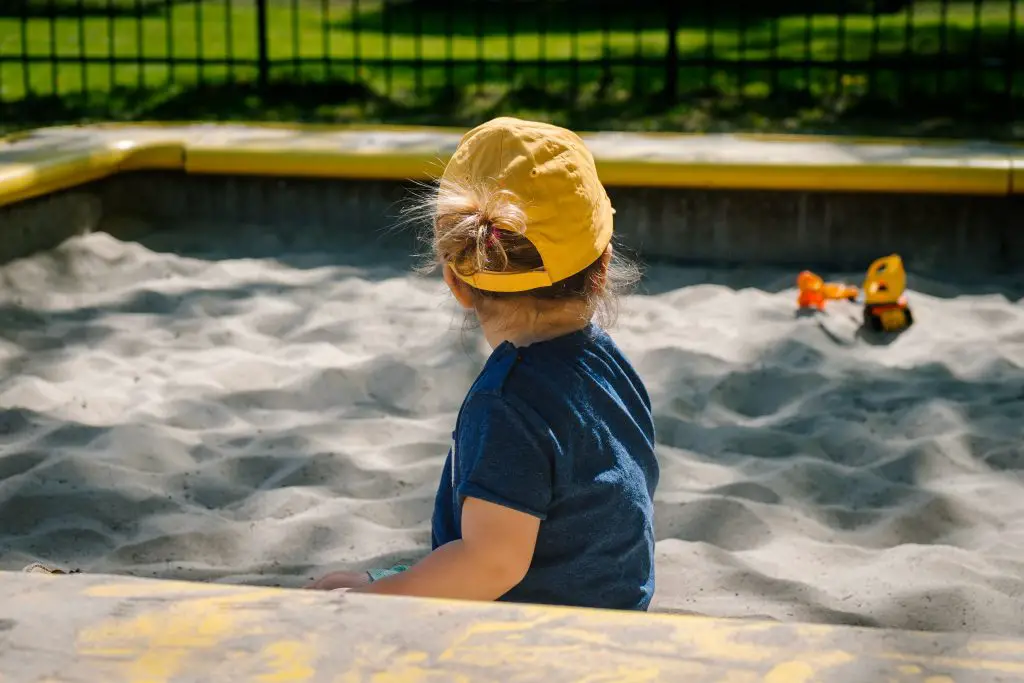
In what ways can playing in a sandbox benefit my child?
Children play for many of the same reasons that we do as adults. They’re just better at it! As adults, our playtime takes us to a place free of worries and stress for a moment.
For kids, playing takes them to a magic world where almost anything can happen. And, for both kids and adults, playing is a great way to learn about life.
- Learning social skills: Opportunities for children to interact with one another through play are how they develop socially and learn to function as part of a group. Opportunities like these are especially important to children who do not yet have siblings who they can socialize with. Sandboxes give kids a chance to interact with others and learn skills like sharing and empathy.
- Mastering conflict resolution: Learning to handle conflicts is an essential part of our kids’ early social lives, and when they play socially, as they do during time in the sandbox, opportunities to negotiate and abate conflict occur naturally. As long as we don’t interfere in normal childhood conflicts, these are great growth opportunities for our kids.
- Improving hand-eye coordination: It’s hard to picture a sandbox without shovels, buckets, molds and other accessories used for building and playing. All of these playtime activities pull double duty for babies, toddlers and younger kids, as they help to refine their hand-eye coordination.
- Boosting creativity: By its very nature, a sandbox inspires creative play. It’s an open space for them to build, imagine and pretend to their heart’s content, with friends or alone. Not only can they exercise their own skills, theories and artistic inclinations, they can share with and learn from others, reaping both social and intellectual benefits.
- Providing opportunities for imagination: The kind of creative play and pretending that can happen during sandbox play are especially important for toddlers and younger children, as they help to teach empathy and expand their concept of the roles other people and creatures play. This is a step in their mental growth that expands their understanding of the world.
- Understanding cause and effect: Independent play is a time when kids engage in small experiments and begin to develop logic through hands-on experiences with cause and effect. Does sand behave differently when it’s wet? What happens when it is poured versus when it is placed? Simple differences in the way they interact with their environment will trigger critical thinking that’s important to their mental development.
- Grasping spatial reasoning: A lot of sandbox play involves filling buckets, making molds and pouring water. These are early opportunities for toddlers to interact with the concept of weight, size and volume, another trigger for important critical thinking.
What factors should I consider when buying a sandbox for my kids?
What material is it made of? Typically speaking, safe sandboxes are made out of one of two materials – wood or plastic.
Plastic sandboxes are lightweight, which makes them easy to move, and their non-porous, smooth surface means that cleaning them is very simple. They require little maintenance but can become hot to the touch on bright summer days and fade in color after years of use.
Wooden sandboxes lend a classic appearance to a backyard, but once placed, they’re not typically designed to be moved. They’re extremely durable and can last for years, though upkeep is, naturally, required to make sure their quality is maintained.
They’re made of natural materials, so there’s no concern about chemical exposure, but wood must be safely treated and maintained yearly, and also checked frequently for splinters and protruding nails or screws.
How big is it? There are several reasons why this could matter to you. First of all, not every backyard is the same size, and a huge sandbox in a small yard can turn your picnic spot into a playground.
Likewise, if you have, or are planning to have more children, smaller sandboxes may lead to a constant fight for elbow room. There are great picks, both big and small, so consider how size factors into your personal equation before purchasing.
Are the features age-appropriate for my children? Some sandboxes have features that are geared towards the baby and toddler set, while others are better suited for older kids. Standing sand tables and mini boxes aren’t likely to be fun for older kids, so make sure you pick a box that’s targeted toward your kiddo.
Does it come with a lid? Trust us, this matters big time! Sand is vulnerable to the elements, plus it can attract animals, particularly neighborhood cats, who may decide to repurpose your child’s sandbox in ways no one would prefer.
A cover that fits securely in place, can’t be disrupted by animals, and keeps moisture away from the sand is a most practical addition to full-size sandboxes.
How can I make sure their sandbox stays clean and safe?
We can’t overemphasize the value of keeping a sandbox covered when it’s not being used. We much prefer boxes with well-fitting lids that slide into place and create a barrier, rather than just sitting on top of the box, as these are better at keeping out rain, snow, and, particularly, persistent animal invaders.
For wooden sandboxes, the use of a clear-coat wood sealant will preserve the quality of the wood while making sure it stays clean and doesn’t rot.
You’re might be used to cleaning the kids up after they’ve played in the sandbox, but cleaning them before makes a difference too! Clean hands and feet mean they’re not tracking bacteria into sandboxes, where it can accumulate through repeated use.
Kids can make a game of combing through the sand in their sandbox with kitty litter scoops, fishing out any debris, small lost toys, or other unwanted items that have become buried as they play.
It’s okay to use water during sand play, but allow the sun to dry the sand out before you put the cover on it. Spreading wet spots out thinly across the surface of the sand can accelerate this process. This is also good for killing bacteria that accumulate through normal sandbox use.
In order to make sure the sand they’re playing in is clean and safe, it’s a good idea to replace the entire contents of their sandbox once a year. Wondering what to do with all that sand? Read on – we cover that later.
What kinds of sand should be used to fill sandboxes, and where can I buy it?
Not all sand is safe for kids to play in, and knowing that is the first step to ensuring they remain safe during sandbox play. Industrial sand is made with aggregate materials, including silica, that shouldn’t be inhaled, and are unsafe for children to have in their sandbox.
The appropriate sand for your child’s sandbox is sold as ‘play sand’ or ‘table sand’. It should be labeled as dust-free, which means it won’t create a cloud when poured into the sandbox or create hazardous air conditions while your child is playing.
It’s non-toxic and doesn’t disperse as easily when not wet, so there’s less chance that it will irritate your child’s eyes during playtime. It’s available online and at most big box home improvement stores at a relatively low price.
What are some ways that I can dispose of, or repurpose, their old sandbox sand?
Save it for icy winter days: If you live in frosty climes, you’re no doubt familiar with the inconvenience of reversing your car out of an icy driveway or parking space.
When it’s time to swap out their play sand for a new batch at the end of the season, shoveling the old lot into a big storage container with a water-tight seal will keep it ready for winter.
When it’s too frigid out for your traditional ice melt to do the job. throw some play sand down to create the traction you need to get going.
Make the most of your compost: If you’ve got a compost pile going for your garden, adding some of their old sandbox sand will help to aerate it, allowing it to decompose quickly and with minimal odor.
This can be a big help, but the sand shouldn’t comprise more than a quarter of your compost pile in order to be effective.
Create a natural water drainage system for indoor plants: When you’re ready to winterize some of your outdoor plants by potting them and taking them indoors, repurpose some old sandbox sand by mixing it with tiny pea gravel. This mixture, placed in the bottom of the pots under the soil, will help it to drain more effectively.
If you can find no other ways to repurpose their sand, it’s not environmentally harmful to take it to a dump. If you don’t have the right vehicle to transport it, renting a truck or small trailer for the day should do the trick.
What are the most common safety hazards associated with sandbox use?
- Contamination: Sandboxes are vulnerable to invasions from animals and insects, which means it’s important to keep them covered when not being used. They can also harbor bacteria, especially when sand is wet, so let wet sand dry out fully before covering and keep sandbox water play to a minimum.
- Hazardous frames: Although it seems innocuous, it’s unsafe to use just anything as a sandbox. Plastic picks should be certified non-toxic and child safe, while wooden ones should be fully finished and checked for splinters and hazards. Old DIY boxes made out of repurposed railroad ties are especially unsafe, as the wood may be saturated with the dangerous carcinogen, creosote, and cause splinters.
- Unsafe sand: As we’ve already mentioned, it’s essential that the sand in their sandbox be ‘play’ or ‘table’ sand that’s naturally sourced. Products that include crushed limestone, marble, silica and quartz, or that are clearly dusty, are all unsafe for children. If in doubt, regional EPA coordinators can point parents in the direction of laboratories that will test their child’s play sand for safety.
What is the history of the sandbox?
While the sandbox was a part of our childhood and seemed equally ubiquitous to our parents and grandparents, there was a time when the concept was a bit different than it is today.
Back in 1885, the proliferation of newly arriving immigrant children playing unsafely in the streets of Boston’s North End was unintentionally creating safety hazards for themselves and others.
In an elegant and creative solution, a group of high-minded lady philanthropists established a series of supervised sand yards, an offshoot of a concept popularized a few decades earlier in Berlin.
The concept grew rapidly popular, with sandboxes taking on the role in outdoor play spaces that we visualize today.
And the winner is…
KidKraft Pirate Sandboat (check price on Amazon). It just hits all the key points! And, think how much fun you’d have had in something like this when you were a kid! You could even have a seat with them now as they take you on the imaginary sand-boat journey of a lifetime!
Okay, maybe we’re getting a bit too excited, but it’s just that cool. It’s a sandbox and a boat, all in one. Talk about sparking the imagination!
Your kids will spend countless hours playing in the sand, interacting with friends, or taking their imaginary pirate ship to far-away places. The canopy even offers them shade from the sun.
There’s a snap-on cover to keep the sand safe and even a storage area under the seats. But the real beauty of this sandbox is that it’s made to last a lifetime. It’s recommended for ages 36 months up to 15-years. Wow!
This is the kind of sandbox that will create long-lasting memories again and again for years to come.

